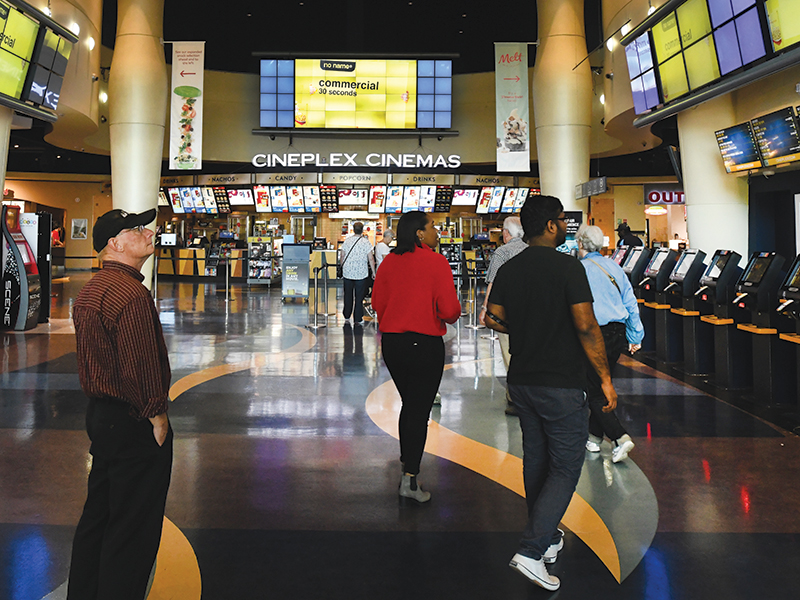

When Assad Mallick joined Cineplex Inc. in June 2019 as vice-president and head of total rewards, one of the mandates of his new role was to set up a new three-part recognition program.
With more than 13,000 employees in Canada and the U.S., the entertainment company had a long-standing program recognizing length of service and a points-based system for theatre-based staff, but it wanted a more fulsome approach that allowed employees to be recognized in a variety of ways.
The impetus, he says, was the results of a culture survey Cineplex conducted among employees in 2016/17. While it highlighted the organization’s hard-working employees and strong brand affinity, the survey also found that some staff were feeling under-appreciated. “They felt like they were going above and beyond, but it wasn’t recognized by the company, so that was the driving force for this bit of work.”
Read: 81% of employers offer company-wide recognition programs: survey
In introducing the new recognition strategy, Cineplex opted to split it into three phases, starting with a peer-to-peer social program and following it with revamped service recognition and a new points-based system.
The social phase
The social recognition element, which was launched in November 2019 as a pilot project with corporate employees, includes personalized e-cards that can be sent between employees over a mobile app or through email. To promote it, Cineplex handed out swag bags with the company logo, a laptop or tablet sleeve, water bottles and a shortbread cookie featuring the program’s emblem, A-List.
“We tried to have a play on words with the industry that we’re in,” says Mallick. “It was more around the ‘A’ stands for awesome and appreciation, rather than an exclusive list that people tried to get onto. Everyone has a different degree of awesome . . . and we thought it would work well with the demographic [and] the entertainment industry that we’re in.”
By the numbers
According to a 2017 survey by WorldatWork, the main objectives of recognition programs are:
79% — Recognizing years of service;
77% — Creating/maintaining a positive work environment; and
76%— Creating/maintaining a culture of recognition.
In addition, the survey found:
89% of organizations are bonded to their recognition programs.
65% of respondents offer between three and six different recognition programs.
57% use employee satisfaction surveys and 52% use participation rates to measure the success of these programs.
Since a peer-to-peer program is straightforward to implement, it was the logical first phase, but Mallick says he considers this type of program the fuel that ignites a culture of recognition. “I’ve seen data from some of the different providers — 95 per cent is social recognition. . . . A lot of organizations typically do a full launch and there’s nothing wrong with that, [but] we . . . needed to move forward with something because employees wanted it and so that was the intent. Social recognition, in my opinion, is the most valuable part of a program.”
Read: Apps, peer recognition among the trends in employee recognition programs
Peer-to-peer programs, which typically make use of technology, allow a much more immediate response, similar to social networking, says Alicia Scott-Wears, director of total rewards content at WorldatWork. In addition to technological capabilities, she notes, these recognition tools and platforms feature trackability, collecting data that employers can use in other areas of total rewards and human resources.
“The ability to quickly see the data collection of these recognition elements can help remind and guide management at the time of performance evaluations and see team members that are driving forces with consistent efforts. Gamification has also surfaced in recent years, making the engagement with recognition an interactive experience for employees and can increase utilization.”
Indeed, Cineplex gamified its launch, with the first employees who signed up entered into a draw to win free iPads and Apple watches. “We got a strong take-up on that,” says Mallick. “It was, I believe, just north of 50 per cent who joined it.”
Future phases
The second phase will be a refresh of Cineplex’s current service recognition program, which highlights employees’ career milestones. While this phase was slated for rollout this past summer, it was interrupted by the coronavirus pandemic, but Mallick hopes to host focus groups with employees and move forward with that next step soon. And finally, it intends to introduce the points-based system in 2022.
Recognition isn’t a one-size-fits-all approach, says Scott-Wears, so it should align with employee achievements at various levels, from simply ‘thank you’ or ‘high five’ messages to cash value awards. “You want employees to feel valued for their contributions to the company. Offering various methods of recognition allows for them to receive this praise from multiple avenues within the business like peers, teams, management and even the organization itself. It also opens recognition direction — not only top down like old methods, but also sideways and bottom up, as well as across boarders for a global approach and reach.”
Read: EY awards $1 million to staff through recognition program
Recognition is also an important part of keeping employees engaged, which is a particular focus during the pandemic. Regardless of the industry, employers have faced challenges as the traditional workforces have evolved to different ways of working. “Our face-to-face interactions were diminished by necessity to help prevent the spread of the virus,” says Scott-Wears. “Recognition, particularly through technology, grants us one more touchpoint in the daily lives of our workforce to continue to engage with them and appreciate them.”
The simple act of sending a card or a video to a colleague as a recognition moment can make the difference in a person’s mental health and wellness, adds Mallick. “It could be that someone’s not having a great day, but that thing that saves them is that two-second [recognition] card.”
Jennifer Paterson is the editor of Benefits Canada.
